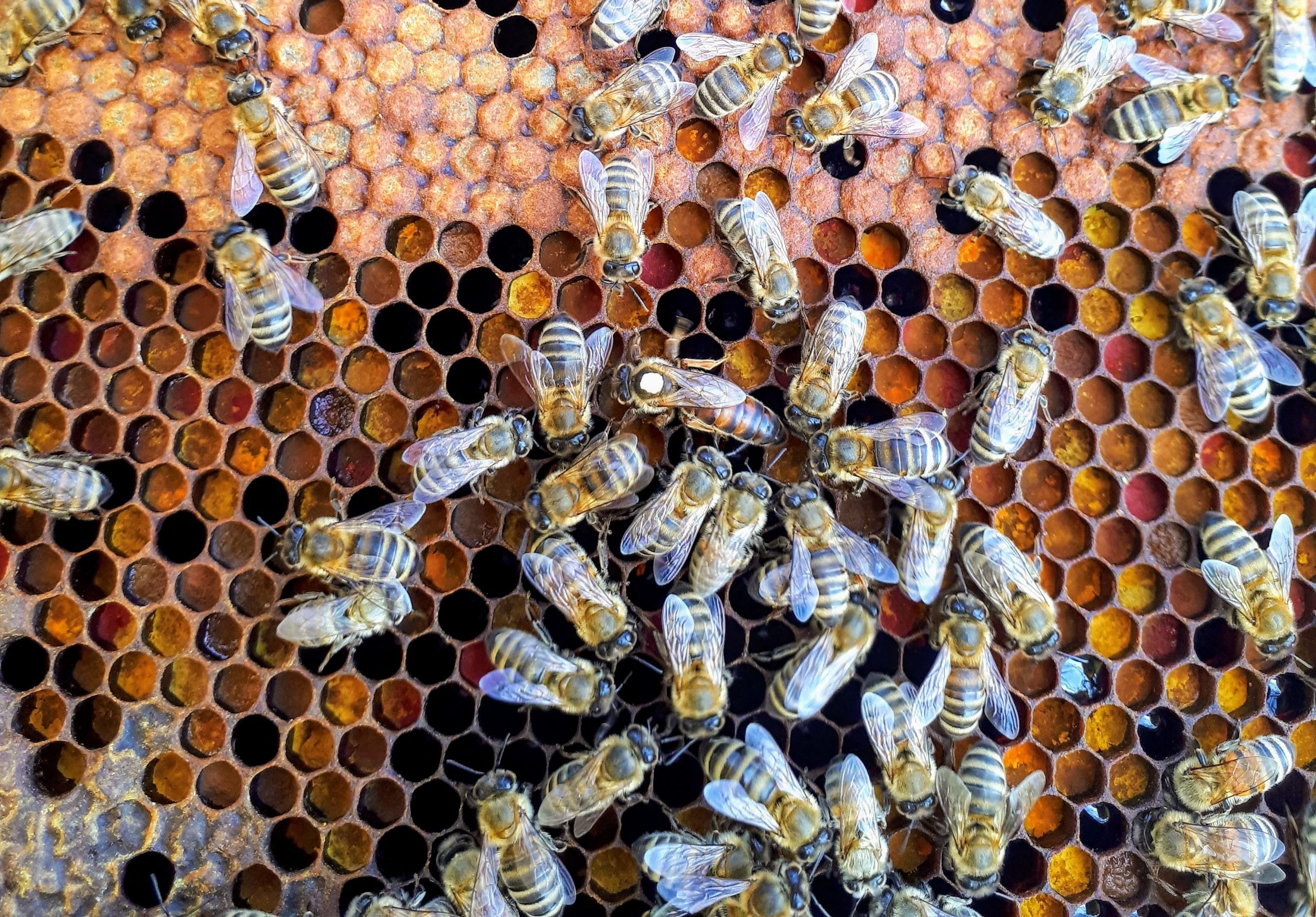This article was published in 2015 and may not reflect the latest scientific research from a hive mind of researchers.
Next time you visit Science World at TELUS World of Science, come to the Search: Sara Stern Gallery and check out the honeybee tree! If you’re lucky, you might see the bees doing some amazing things. The first thing you should look for is two honeybees standing face to face, connected by a tongue. Are those honeybees kissing? It sure seems like it.
Why do bees "kiss"?
Worker bees do not leave the hive until they are about three weeks old. Until then, they must rely on older bees to bring them nectar to eat. When bees "kiss," they are actually passing nectar to other bees. When a mature worker bee collects nectar from a flower, she stores it in her stomach until she gets back to the hive. As the nectar sits in her stomach, water is removed from it, which makes it more condensed and easier to share. When she gets back to the hive, she will find another bee who will take the nectar. Then, the mature honeybee will form drops of nectar on the end of her tongue for the other bee to lick off. Each bee that holds nectar in her stomach pulls more water from it and, eventually, the nectar becomes thick and turns into honey. Honeybees will then store it in the cells of the honeycomb where it dries up even more.
So, if anyone asks, you can tell them that honey is made from bee kisses!
Wanna see some bees in action?
Come visit our honey bees in the Search: Sara Stern Gallery. They’re all the buzz!
